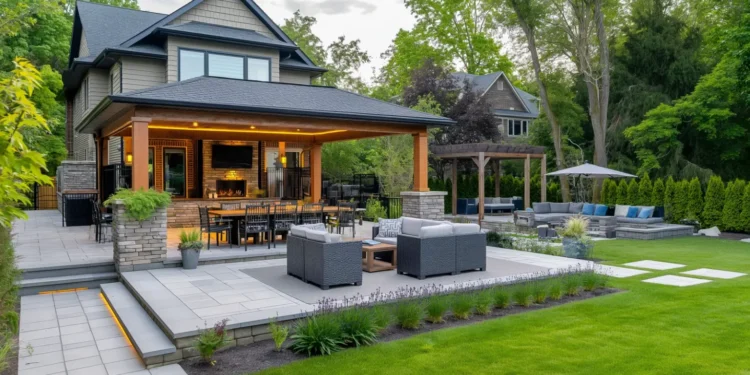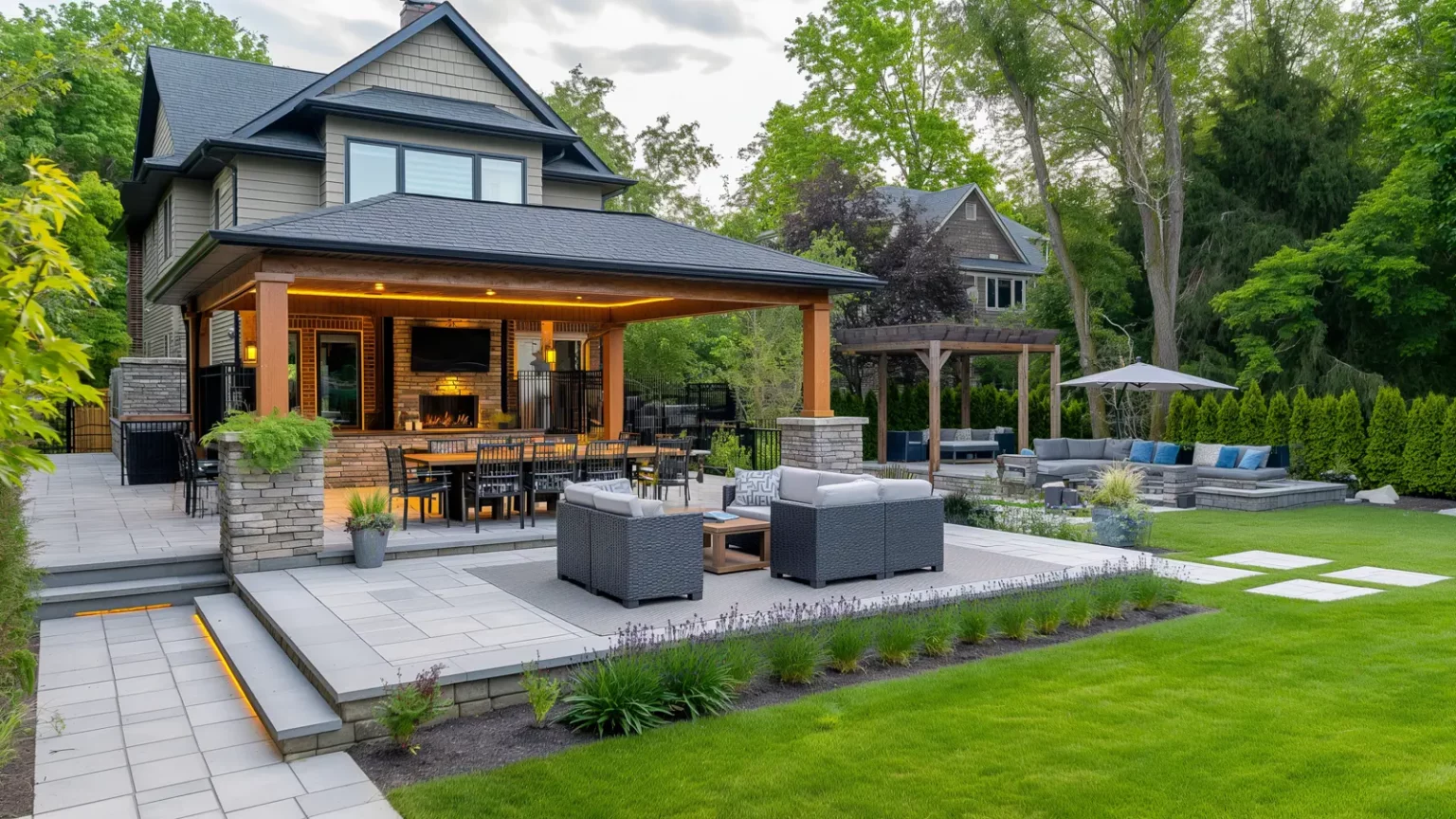Creating Inviting and Functional Outdoor Spaces

Table of Contents
- 1 Table of Contents
- 2 Introduction to Outdoor Space Design
- 3 Benefits of a Thoughtfully Designed Outdoor Area
- 4 Key Elements in Outdoor Space Design
- 5 Tips for Designing Functional Outdoor Spaces
- 6 Materials and Trends in Outdoor Design
- 7 Insights from Successful Outdoor Projects
- 8 Conclusion: Transforming Outdoor Spaces
Table of Contents
- Introduction to Outdoor Space Design
- Benefits of a Thoughtfully Designed Outdoor Area
- Key Elements in Outdoor Space Design
- Tips for Designing Functional Outdoor Spaces
- Materials and Trends in Outdoor Design
- Insights from Successful Outdoor Projects
- Conclusion: Transforming Outdoor Spaces

Introduction to Outdoor Space Design
Outdoor spaces have evolved from simple backyards into sophisticated extensions of our homes. In recent years, there has been a surge in outdoor living spaces’ popularity, driven by the desire to blend nature with our living environments. The art of outdoor space design lies in creating an environment that enhances lifestyle while maintaining functional and aesthetic value. Collaborating with a seasoned architect can bring these unique visions to fruition by tailoring designs to suit individual preferences and lifestyles.
A thoughtfully designed outdoor area can transform an ordinary space into a personal oasis that extends the comfort and style of your interior living spaces outward. In contemporary residential design, the line between indoor and outdoor has become blurred, allowing homeowners to enjoy the serenity of nature while benefitting from the comfort of home. As we continue to seek new ways to maximize our living spaces, the outdoor areas offer an exceptional opportunity for creativity and personal expression.
Benefits of a Thoughtfully Designed Outdoor Area
The benefits of a well-conceived outdoor living space are manifold. Beyond providing a venue for relaxation and entertainment, they also serve as crucial stress-relief zones. Spending time outdoors has been linked to better mental health and well-being. Additionally, these spaces can offer environmental benefits. By integrating sustainable gardening practices, homeowners can create eco-friendly spaces that support biodiversity and contribute to the health of the ecosystem.
Another significant advantage is the increase in property value that well-designed outdoor areas can offer. A functional outdoor space enhances curb appeal and delivers a substantial return on investment by adding to the home’s living and entertaining capacity. Prospective buyers often favor homes with developed outdoor areas, seeing them as an added luxury and a testament to the property’s potential.
Key Elements in Outdoor Space Design
Designing an engaging outdoor space requires attention to essential elements such as seating, lighting, and plant selection. These components form the backbone of the design and significantly impact the functionality and ambiance of the area. Proper seating arrangements can transform a space from a mere backyard into a comfortable outdoor living room. By incorporating a mix of permanent seating and flexible options such as movable chairs, the space caters to various occasions and guest numbers.
Lighting plays a significant role in extending the usability of outdoor spaces into nighttime. Ambient lighting, path lights, and accent lights come together to create a safe, inviting atmosphere after dark. Completing the design with a considered selection of plants adds a dynamic layer, as they offer shade, privacy, and bursts of color. Plants can also reduce noise and serve as natural climate regulators, making them indispensable in any outdoor setting.
Tips for Designing Functional Outdoor Spaces
Crafting a functional outdoor space begins with a strategic approach to planning and design. Understand the specific needs of today and anticipate future requirements to ensure longevity and adaptability. Consider local climate and weather conditions when choosing materials and plant species, ensuring they can withstand the elements and maintain their attractiveness over time.
- Strategically zone different areas for dining, lounging, and gardening to create a well-organized, cohesive design.
- Incorporate flexible and multi-purpose furniture elements that can be easily rearranged or stored, making the space versatile for various events.
- Ensure accessibility and safety, particularly for children and older adults, by maintaining clear pathways and secure handrails where necessary.
Materials and Trends in Outdoor Design
The choice of materials is critical in identifying both the durability and sustainability of outdoor spaces. In modern design, eco-friendly materials have gained traction, with an increasing preference for recycled and sustainable products. Recycled wood, composite decking, and stone are favored for their resilience and reduced environmental impact, aligning with global efforts toward sustainability.
Keeping up with innovative outdoor design trends ensures that an outdoor space remains fresh and appealing. Current trends include incorporating vertical gardens to maximize greenery in limited spaces, defining areas with creative lighting solutions, and integrating fire pits or water features to boost the ambiance and theme of the space. Each element should complement the other, creating a harmonious and visually captivating outdoor retreat.
Insights from Successful Outdoor Projects
Examining successful outdoor projects can offer valuable insights into what works well in various settings and inspire homeowners to incorporate proven strategies into their designs. For instance, award-winning garden designs often integrate sustainable, low-maintenance plants with innovative layouts to create beautiful and functional spaces. Such projects demonstrate the importance of marrying creativity with practicality, ensuring the space serves its intended purpose while showcasing the homeowner’s style.
These successful case studies reveal how the right combination of elements can transform simple outdoor areas into award-winning showcases. Highlighting these achievements can provide readers with a tangible vision of what is possible, encouraging them to explore and experiment in their outdoor spaces.
Conclusion: Transforming Outdoor Spaces
The potential of outdoor spaces to enrich our lives is immense. Well-designed outdoor areas extend the home’s comfort and functionality into nature, offering settings for relaxation, socialization, and ecological mindfulness. By integrating elements of creativity and sustainability, these spaces transform into vital aspects of modern living, enhancing overall well-being and property value.
For those considering embarking on an outdoor project, it’s essential to embrace innovation and sustainability. By focusing on personal needs and long-term goals, homeowners can ensure their designs are not only timeless but also environmentally responsible. As living priorities shift, the renewed focus on outdoor spaces offers endless opportunities for enjoyment, comfort, and connection within the sanctuary of one’s home.






